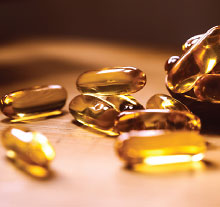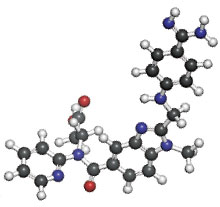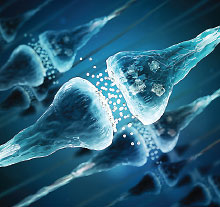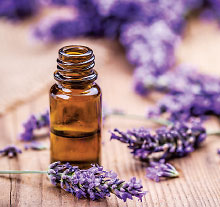High-Dose Omega-3 May Benefit Some Children With ADHD
High doses of eicosapentaenoic acid may help to improve attention in youth who have attention-deficit/hyperactivity disorder (ADHD) and low levels of this the omega-3 fatty acid, suggests a study published in Translational Psychiatry.
Researchers at Taiwan’s China Medical University Hospital and King’s College London conducted a 12-week clinical trial comparing the effects of high-dose eicosapentaenoic acid (1.2 g per day) versus placebo (1.2 g of soybean oil per day) in 92 youth aged 6 to 18 years with ADHD. Participants were not taking any other medications for at least six months prior to the study.
The researchers evaluated the youth’s focused attention, sustained attention, impulsivity, and vigilance at the beginning and end of the trial. Additionally, the researchers collected blood samples from the youth at the start and end of the trial to assess changes in eicosapentaenoic acid levels.
Youth who received eicosapentaenoic acid experienced greater improvements in focused attention but less in impulsivity than those in the placebo group over the course of the trial. Additional analysis revealed that these improvements were linked with eicosapentaenoic acid levels, as youth with lower baseline eicosapentaenoic acid showed the greatest improvements in attention while youth with elevated eicosapentaenoic acid had the worst improvement in impulsivity relative to placebo.
“[O]ur study shows some benefits of EPA [eicosapentaenoic acid] monotherapy on cognitive symptoms of ADHD,” the authors concluded. However, they advised against eicosapentaenoic acid supplementation in youth who have high endogenous levels of eicosapentaenoic acid.
Dabigatran May Reduce Alzheimer’s Symptoms, Animal Study Suggests
Increasing evidence supports a role for excess blood coagulation in the brain in the onset and progression of Alzheimer’s disease. A study appearing in the Journal of the American College of Cardiology reports that mice genetically modified to develop Alzheimer’s disease given the anticoagulant dabigatran showed fewer symptoms of the disease. While the findings were in animals, the study authors suggested they support “future investigation on whether the use of direct oral anticoagulants might be of therapeutic value in [Alzheimer’s].”
Researchers at the Centro Nacional de Investigaciones Cardiovasculares in Madrid and the Rockefeller University in New York treated 8-week-old TgCRND8 mice (animals predisposed to develop Alzheimer’s-like symptoms at a young age) with 5 mg/g dabigatran or placebo (supplemented in food daily) for up to 52 weeks. In this mouse model, amyloid deposits start to form in the brain at about 10 to 12 weeks of age.
The researchers conducted numerous assessments along the way, including a maze test when the mice were 25 weeks old, MRI scans when the mice were 40 weeks old, and brain tissue analysis at 60 weeks.
The maze results showed that the TgCRND8 mice taking dabigatran had better spatial memory than those taking placebo. The MRI results showed mice taking dabigatran also had less decline in their cerebral blood flow—a marker of healthy brain function—than the animals in the placebo group. The postmortem tissue analysis at 60 weeks showed that mice taking dabigatran had about 25% fewer amyloid plaques than mice taking placebo, as well as reductions in other biomarkers associated with Alzheimer’s.
Study Predicts Treatment Response in Youth With OCD
Researchers at Aarhus University Hospital in Norway and colleagues have identified three distinct trajectories of improvement among youth receiving treatment for obsessive-compulsive disorder (OCD). The researchers also identified traits that may predict which trajectory youth will go through during treatment, which may lead to more personalized treatment strategies.
This study was published in the Journal of Child Psychology and Psychiatry.
The researchers analyzed data from 269 children and adolescents who participated in a three-year clinical trial exploring stepped care for OCD. All the participants received 14 weeks of cognitive-behavioral therapy (CBT), followed by additional CBT sessions or antidepressant therapy if necessary.
They found that over the study period, three distinct patterns of response emerged: a rapid and sustained response (large improvements within 14 weeks), a slow but continual response (limited improvement in the first 14 weeks but greater improvements after about 66 weeks), and a limited response (moderate improvements in first 14 weeks followed by gradual symptom worsening over three years).
The analysis revealed that slow responders were more likely to present with severe avoidance symptoms and tic symptoms, whereas limited responders were more likely to have severe symptoms related to cleanliness and reduced insight into their disorder. Older age was also a predictor of a limited response to stepped care.
Researchers Identify Protein That Regulates Diazepam’s Activity
A protein called Shisa7 interacts with GABA receptors in the brain and enhances the potency of the benzodiazepine diazepam, reports a study in Science. This finding could help researchers develop better drugs that target GABA receptors.
A team at the National Institute of Neurological Disorders and Stroke and colleagues used neurons grown in petri dishes to assess where Shisa proteins were localized. While other members of the Shisa family were found near glutamate receptors, Shisa 7 was found near GABA receptors. Follow-up studies in neurons engineered so the Shisa7 protein was not expressed showed that these neurons had fewer GABA receptors on their surface.
The researchers next genetically modified mice to not express Shisa7. Unlike normal mice, who show a decreased stress response on a maze task after receiving diazepam, the Shisa7-deficient mice continued to show elevated stress after receiving diazepam.
“Our data indicate that Shisa7 regulates [GABA receptor] trafficking, function, and pharmacology and reveal a previously unknown molecular interaction that modulates benzodiazepine action in the brain,” the authors wrote.
Lavender May Have Some Anxiolytic Properties
A meta-analysis published in the journal Phytomedicine suggests lavender—whether taken orally or inhaled—might help reduce anxiety symptoms. The authors cautioned, however, that many of the included studies have some risk of bias.
Lavender has long been used as an herbal remedy to reduce mild stress and improve sleep. Many of the chemicals in lavender oil can bind to NMDA receptors and other brain targets, which has led to numerous clinical studies testing the anxiolytic properties of this herb.
Researchers from the University of Parma in Italy and colleagues compiled 90 such clinical studies examining the effects of lavender on anxiety, including 65 randomized studies and 25 nonrandomized studies. These studies encompassed three types of lavender oil administration: oral (Silexan pills), aromatherapy, or topical application.
The analysis suggested that oral Silexan was associated with significant improvements in anxiety symptoms compared with placebo pills (2.9-point greater reduction on the Hamilton Anxiety Scale after six weeks of use). Inhaled lavender was also associated with anxiety symptom improvements, although the effects were not as strong, and there was no evidence that inhaled lavender reduced systolic blood pressure (often considered a biomarker of anxiety). Topical lavender also was associated with a positive effect, but the authors could not determine if the lavender or the application technique (for instance, massage) contributed to these effects.
The authors pointed out that performance bias could affect the results of the trials involving inhaled or topical lavender, as typically the participants knew what treatment they were receiving. At the same time, since lavender therapy is inexpensive and generally safe, it might be worth considering in some clinical contexts, they said. ■





